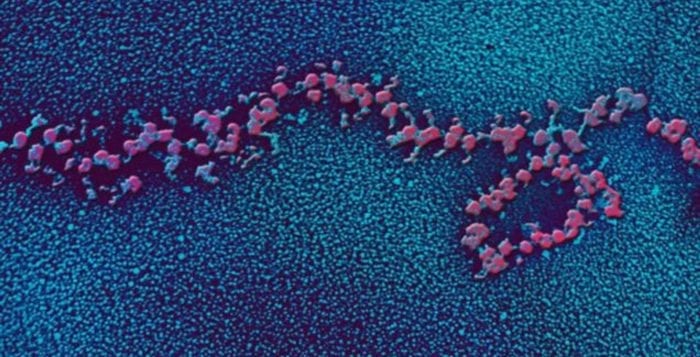Life Lines: It’s time to appreciate your ribosomes
By Elof Axel Carlson

Most people are probably unaware that their cells contain ribosomes. They probably know each of their cells has a nucleus and within that nucleus are chromosomes and that the chromosomes contain their genes.
But most people do not know what other organelles in their cells are present and what they do. One of them is the ribosome. When you look at an electron micrograph of a cell, you see the cytoplasm (the goop between the cell membrane and the nucleus) has many membranous folded sheets called the endoplasmic reticulum on which are thousands of tiny dots. Those dots are the ribosomes.
In the 1950s, after DNA was shown to be the hereditary material and present in the chromosomes of cells, some biologists began exploring how the structure of DNA is treated to the functions carried out by genes. One of these was how information (the genetic code) was carried by the genes and how that became the traits we see of the organism.
One theory quickly proven was that DNA made another copy with a slightly different chemical composition, called RNA. In fact, there were three types of RNA − a copy of the gene sequence called messenger RNA, a groups of small RNA molecules that carried one of the 20 different amino acids that compose protein molecules, and an RNA that is present in a molecular machine called the ribosome.
The ribosome takes the messenger RNA coming from the genes, enters the ribosome and begins plugging amino acids whose tips contain a three-letter sequence corresponding to one of the 20 different amino acids.
The ribosome is a complex molecule, much bigger than hemoglobin in our cells, and carries out the protein synthesis for the cell, each messenger RNA producing a specific type of protein from a specific gene.
All that mouthful of scientific events you can translate into this thought. When I eat my three meals a day, how does so much of it become me? Well, one thing to thank is your ribosomes. They take the digested bits of proteins from your foods and convert them into the proteins (enzymes, structural components of your cell organelles, and switches used to turn genes on an off or make fertilized eggs into embryos, fetuses, babies and ultimately you).
I read an interesting memoir by a Nobel molecular biologist (who started his career as a physicist) who worked on the structure of the ribosome. It has a large and a small protein mass. It also has several ribosomal RNA regions that allow the messenger RNA to enter, the transfer RNAs to deposit their individual amino acids, and the ribosomal RNA to move them along and grow the protein chain. It took about 40 years to work out the details of this molecular machine.
For science buffs, I recommend reading Venki Ramakrishnan’s 2018 book “Gene Machine: The Race to Decipher the Secret of the Ribosome.” It is a wonderful memoir about the many blind alleys, goofs, luck, hard work, competition and numerous tools used by scientists to bring about the solution to a complex system invisible to the naked eye and it requires the disciplines of physic, chemistry and biology to solve it.
Elof Axel Carlson is a distinguished teaching professor emeritus in the Department of Biochemistry and Cell Biology at Stony Brook University.







